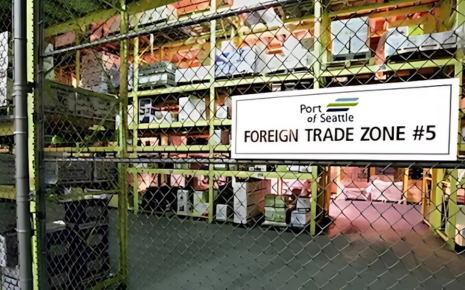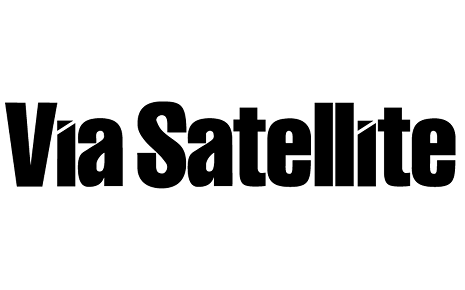Kent Valley Foreign-Trade Zones: A Strategic Response to Global Trade Turbulence

23 Jun 2025
News
As tariffs again reshape global trade dynamics, importers across Washington State, including Kent Valley, home to the second largest concentration of warehouse and distribution centers on the West Coast, are bracing for uncertainty. At the Port of Seattle, officials have reported an uptick in inquiries from companies seeking assistance with in-transit shipments — particularly those concerned about new tariffs on Chinese goods. While March and April saw a bump in cargo volumes — likely driven by shippers rushing goods in ahead of tariff hikes — officials were still forecasting a potential 40% drop in cargo before the U.S. and China announced a temporary 90-day tariff reduction in May.
Liberation Day Tariffs
The perturbations at the ports stem from the “Liberation Day” tariff package, announced by the Trump administration on April 2, 2025. The package introduced sweeping trade measures that included a 10% universal tariff on most imports and additional "reciprocal" tariffs on specific countries, including duties as high as 145% on select Chinese products.
The move quickly sparked concern across global supply chains and domestic industry, particularly in trade-dependent states like Washington. Far from being a one-off event, the package highlights the volatility and uncertainty of the current trade landscape.
Within a week of its announcement, reciprocal tariffs — with the exception of those targeting Chinese goods — were paused for 90 days. Then, on May 12, the United States and China reached a separate agreement to temporarily scale back retaliatory tariffs. Under the deal, U.S. tariffs on Chinese imports were reduced from 145% to 30%, while China lowered its tariffs on U.S. goods to 10%. While these reprieves offer momentary relief, they underscore a broader reality: tariff policy is now a moving target, and businesses must prepare for continued uncertainty.
As Washington State holds its breath to see whether cargo volumes rebound and what shape federal tariff policy will ultimately take, more companies are looking for strategies to manage trade policy volatility. Thus, it is an opportune moment for Kent Valley importers to revisit a critical — and often underutilized — trade resilience tool: Foreign-Trade Zones (FTZs).
What is an FTZ?
A Foreign-Trade Zone is a secure, federally authorized area typically located near a port of entry, where goods can be received, stored, processed, or even manufactured without immediately triggering U.S. customs duties. These zones are legally treated as being outside U.S. customs territory for tariff purposes, meaning duties are only paid if and when goods enter domestic commerce. For companies navigating volatile trade policy, FTZs offer a valuable buffer to control costs and improve flexibility. Kent Valley is served by two FTZs, administered by the Port of Seattle and the Port of Tacoma.
In the wake of the Liberation Day tariff package, FTZs offer Kent Valley importers a valuable buffer against policy-driven cost spikes. While FTZs do not eliminate tariffs imposed under Liberation Day measures, they allow Kent Valley importers to defer tariffs, providing critical timing and cash flow advantages. For goods subject to the proposed universal and reciprocal tariffs, most must be admitted into an FTZ under Privileged Foreign (PF) status, which locks in the tariff rate and classification at the time of entry, even if the goods are assembled, repackaged, or otherwise modified within the zone.
Tariff Deferral
The primary benefit, however, is tariff deferral. Importers are not required to pay duties until the goods leave the FTZ and enter the U.S. market. At the very least, this allows companies to better manage working capital by delaying payment until inventory is sold or moved into domestic consumption. In volatile trade environments, that delay can buy time, whether to reassess sourcing strategies, monitor policy shifts, or avoid paying duties on goods that may ultimately be exported or destroyed.
In cases where tariff policy does not mandate PF status, FTZs offer even greater flexibility. Importers can choose to admit goods under either PF status or Non-Privileged Foreign (NPF) status, with NPF delaying the assessment of duties until the goods leave the zone, depending on their expectations:
- If tariffs are expected to rise, PF status allows companies to lock in a lower rate at the time of entry.
- If tariffs are expected to fall — due to negotiations, policy changes, or international agreements — NPF status allows them to benefit from lower rates in the future, since duties are assessed under the policies in play when the goods leave the zone.
This flexibility gives companies more than just breathing room — it gives them a planning advantage. In an era where tariff schedules can shift within weeks, the ability to manage how and when duties apply is no longer a luxury; it’s a strategic necessity.
But the advantages of Foreign-Trade Zones don’t stop at tariff deferral. Beyond helping importers respond to trade shocks, FTZs provide enduring operational benefits that can reduce overhead, improve logistics, and unlock cost savings across a wide range of industries. These benefits are especially relevant for companies engaged in high-volume importing, manufacturing, or global distribution.
Merchandise Processing Fee (MPF) Consolidation
One of the most immediately quantifiable savings opportunities is through the Weekly Entry Program, which helps reduce costs tied to the Merchandise Processing Fee (MPF). Typically, companies must pay an MPF for every customs entry — a flat charge applied to each incoming shipment — which quickly adds up for businesses processing dozens or even hundreds of monthly entries. FTZ users, however, can consolidate all their shipments into a single weekly customs entry, paying just one MPF per week and dramatically lowering annual fees while simplifying paperwork. The savings can easily reach five figures or more each year for firms operating on tight margins or high throughput.
Duty Elimination on Re-Exported Goods
FTZs also offer significant advantages to companies involved in re-exporting goods. When goods are admitted into an FTZ but never formally enter U.S. commerce — and are instead shipped to another country — they are fully exempt from U.S. duties and quota charges. This benefit is compelling for businesses using the United States as a transshipment or light-assembly hub before sending products abroad. The re-export benefit ensures companies aren’t penalized for simply routing products through the U.S., creating a more favorable environment for export-intensive operations.
Duty Reduction via Inverted Tariffs
For manufacturers, the most strategic benefit is the opportunity for duty reduction through inverted tariffs. In many sectors, the tariff on a finished good is actually lower than the cumulative tariffs on its foreign-sourced components. When manufacturing is conducted within an FTZ, businesses can apply the lower duty rate of the finished product rather than the higher rates of the imported parts. This structure — known as the inverted tariff benefit — can result in significant cost savings over time. It’s particularly attractive in industries like electronics, aerospace, and advanced materials, where foreign inputs are common but finished products may fall under preferential tariff codes.
Together, these broader advantages position FTZs as more than a defensive strategy — they are a comprehensive operational asset. By offering cost control on both imports and exports, improving customs efficiency, and supporting globally integrated supply chains, FTZs help businesses in Kent Valley and beyond turn trade compliance into a competitive edge by offering cost control on imports and exports, improving customs efficiency, and supporting globally integrated supply chains.
FTZ Options in Kent Valley
The benefits of FTZs are already available to businesses in Kent Valley — a region uniquely positioned between the Port of Seattle and the Port of Tacoma. Each of these authorities administers an FTZ program:
- FTZ #5, administered by the Port of Seattle, serving King County; and
- FTZ #86, overseen by the Port of Tacoma, covering sites throughout Pierce County, including parts of Kent Valley.
Importers in the region looking to activate their own FTZ site should begin by contacting the port authority serving their respective county. However, importers should be aware that the process typically takes four to six months to complete and, subsequently, would not help companies looking to navigate pressing trade concerns. Firms needing immediate assistance with inbound shipments should reach out to the Port of Tacoma, as it has active third-party logistics operators (3PLs) capable of receiving goods into FTZ #86. This service makes Tacoma a more accessible entry point for companies seeking fast-track management options for unexpected tariff costs.
Kent Valley's Trade Resilience
In today’s volatile trade landscape, FTZs offer companies a powerful way to manage uncertainty, reduce costs, and build long-term resilience. From tariff deferral and duty reduction to export exemptions and operational savings, FTZs provide immediate relief and enduring strategic value, especially for firms operating in trade-intensive regions like Kent Valley.
The Washington State Department of Commerce Tariff Response Resource Guide offers a comprehensive starting point for businesses seeking further guidance. This centralized portal connects companies with tools, insights, and programs — including FTZ resources — designed to help navigate the challenges of shifting tariff policy.
Despite today’s headwinds, Kent Valley remains one of the West Coast’s most competitive and logistics-ready industrial corridors. With access to two federally authorized FTZ programs, a deep bench of logistics infrastructure, and strong regional coordination, the Valley continues to offer the tools companies need to adapt and thrive.
More Topics




